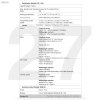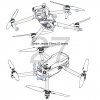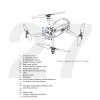mschaffer66
Well-Known Member
I started typing out a response. A long one actually. But then I re-thought things. I guess in a way most of this makes sense. I was looking at it as being an upgrade for someone who has an Air2 or an Air2S. I was having a hard time rectifying that because in some ways some of its aspects are a lateral move from an A2S. But I guess the way to really look at it as an upgrade for someone's aging Mavic or Mavic 2. Thinking about it like that it makes more sense. It's an upgrade that gets DJI back on par with some of the features of the Evo2.I intend to get one as soon as I can. I've been waiting since I lost my mavic in December 2018.
No other drone has a 7x zoom. Good for getting close up's of girls with them being too suspicious.
45 minute battery is really good. That will make for 35 minute flights.
Great range too. In my urban area I start losing signal at 2,000 feet. I'd be happy with a 8,000 foot range in the city.
Maybe 5 miles in certain areas.
I don't really care that much about the price.
The one thing I don't understand, and I don't seem to see many complaints in comments on articles, what is the deal with the fixed aperture?















